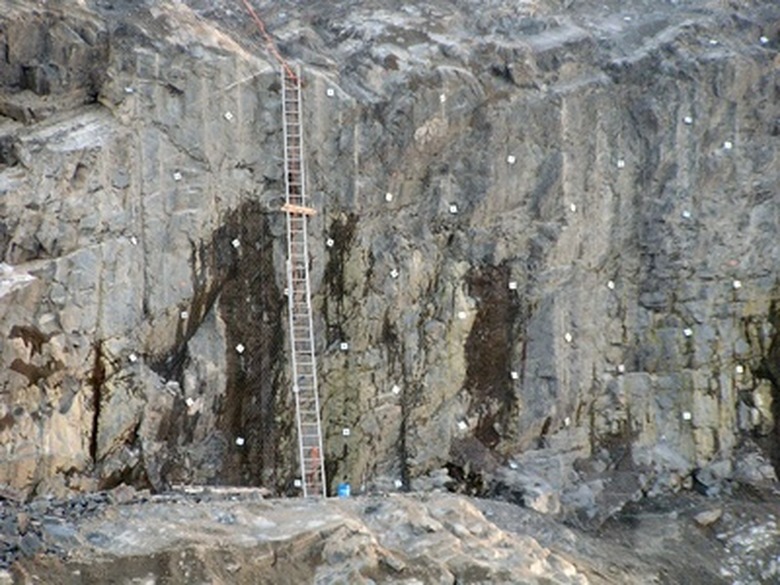Interesting Facts About Quartzite
Quartzite is a metamorphic, or changed, rock. Changes in rocks are a slow process resulting in an altered appearance and form as a result of different conditions. Temperature, pressure and chemically changed environments are the usual catalysts of change in metamorphic rock.
Background
Background
Quartzite is originally sandstone that undergoes metamorphism via intense heat and pressure. The quartz grains are highly compacted resulting in a dense rock. Quartzite has a high degree of quartz — 90 percent or more — and is the most concentrated, purest form of silica found on Earth. They tend to form when continents collide with each other to create mountains.
Features
Features
Quartzite is usually snowy white and occasionally pink or gray. Dark colors are rare. The structure is smooth and hard-wearing with a granular appearance and tends to be seen in hill or mountain ranges, or on rocky coastlines. They have a glassy luster due to the quartz content.
Uses
Uses
Quartzite is used for making bricks and other strong building materials. It is also growing in popularity as a decorative stone and has a limited use as crushed stone. As it is so hard, quartzite is not quarried as much as softer stone and tends to be taken from the surface rather than underground. Less than 6 percent of all crushed stone produced in the United States is quartzite.
References
Cite This Article
MLA
Mayes, Chrissie. "Interesting Facts About Quartzite" sciencing.com, https://www.sciencing.com/interesting-quartzite-7320506/. 24 April 2017.
APA
Mayes, Chrissie. (2017, April 24). Interesting Facts About Quartzite. sciencing.com. Retrieved from https://www.sciencing.com/interesting-quartzite-7320506/
Chicago
Mayes, Chrissie. Interesting Facts About Quartzite last modified March 24, 2022. https://www.sciencing.com/interesting-quartzite-7320506/
